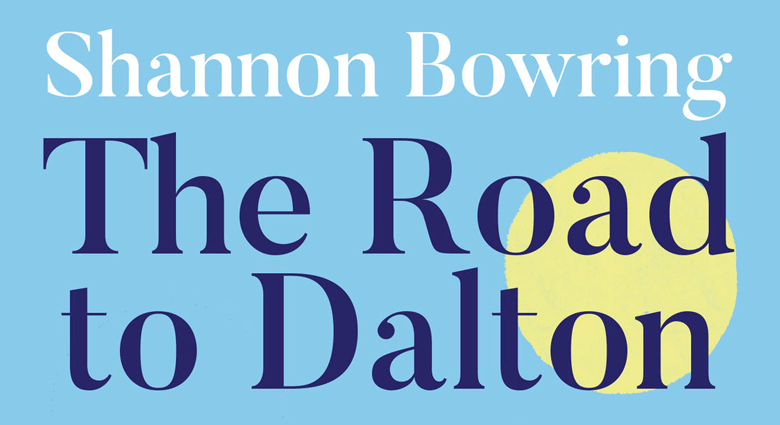The Road to Dalton
By Shannon Bowring (Europa Editions, 2023)
Shannon Bowring’s debut novel, The Road to Dalton, has earned high praise from some Maine all-star authors. Richard Russo has a rave on the front, as does Morgan Talty; Susan Conley’s is on the book’s back cover.
But apart from that, if I told you only that it’s a book about death, some close calls, and complex and difficult relationships, all set in the bleak landscape of northern Maine, is that something you’d jump to read?
Well, then I’d have to tell you that although initially I was lukewarm, the book soon caught my attention. I began to care about the characters and their plights. As much as the book was full of tragedy and compromises, I didn’t feel flattened by it; it held hope, too, and provided a reminder that people struggle but they also cope. It really is that: a book about coping.
There is in Bowring’s writing that same vibe of tension, uncertainty, and potential threat.
Set in a small (fictional) town—Dalton—in the 1990s in Aroostook County, some of the events and undercurrents we read about here could have, in another kind of book, easily been sensationalized.
Extramarital affairs? Taboo intimacies? Abusive spouses, drunk partners? Instead, she treats these situations with respect, recognizing that choices have many different reasons, or don’t feel like choices. There are lessons to be learned here about not rushing to judge life experiences of others. People settle into complex situations. And they learn to cope.

I was reminded of author Ruth Moore and her books about small town Maine. There is in Bowring’s writing some of that same vibe of tension, uncertainty, and potential threat. We can, with both authors, feel a bit off-kilter, sensing that tragedy could be just ahead, and that people’s reputations, relationships, or future could be ruined in one fell swoop.
If you have enjoyed the fiction of Ruth Moore, give Bowring a try.
Here, in one sentence, is an example of how Bowring shares a character’s reality:
“He only knows it’s the Fourth of July because he gets stuck at the top of Depot Hill for the parade on Main Street with all the same parade-things he’s seen all his life, the firetrucks and ambulances and the Chief driving one of the DPD cruisers, and the potato harvesters and massive John Deere tractors and Girl Scouts dancing to some Whitney Houston song and Boy Scouts dragging their heels across the hot asphalt and candy thrown everywhere and sirens and horns and bursts of laughter and happy screams and babies crying and kids demanding more candy, more firetrucks, more everything, and the sun is big and round and yellow, and Nate has to find a different way to get to Bergeron’s, where he forgets what he came to town for and ends up buying a quart of Allen’s and a box of powdered sugar donuts and that’s what he’s drinking and eating when, later that night, he tastes blood and hears the distant boom of fireworks down at the river.”
A Fourth of July celebration in a familiar setting should feel enjoyable—after all, it is rich with traditions, an upbeat event—but here we are seeing it become nightmarish. The description reads as stream of consciousness; disorienting to the reader, it allows us to experience the character’s own disorientation.
Stay tuned to read more from Shannon Bowring. She credits growing up in Ashland as inspiration for Dalton, 20 miles west of Presque Isle in Aroostook County. Now living in Bath, she has been nominated for a Pushcart Prize and has a Master of Fine Arts from Stonecoast, University of Southern Maine. Her sequel to The Road to Dalton is described as nearing publication.
Tina Cohen is a therapist who spends part of the year on Vinalhaven.





